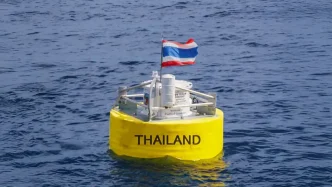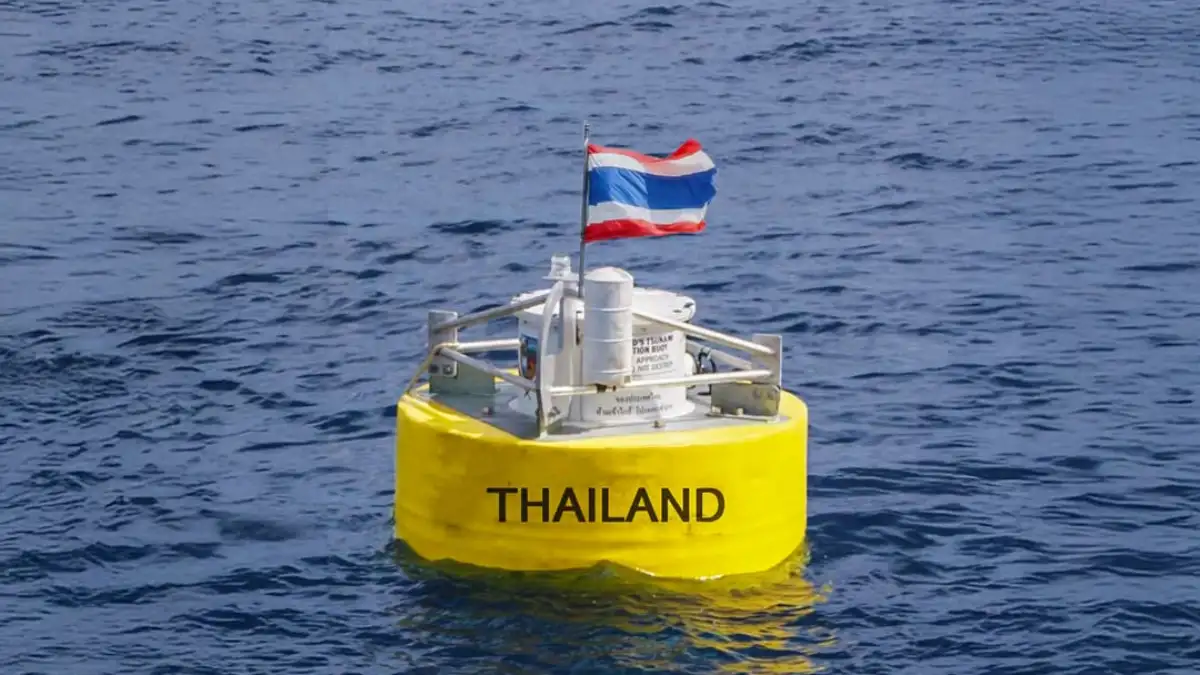In the wake of a series of moderate earthquakes in the Andaman Sea, Thailand is ramping up efforts to ensure the safety of its coastal communities. On June 27, 2025, the Department of Disaster Prevention and Mitigation will conduct a large-scale tsunami evacuation drill across six provinces along the Andaman coast, a region historically vulnerable to seismic activity. This exercise, coupled with expert warnings about the potential for tsunamis, underscores the urgency of preparedness in a country still haunted by the devastating 2004 Indian Ocean tsunami.
Earthquakes Raise Concerns
Over 15 seismic events, ranging from 3.x to 5.x in magnitude, have rattled the Andaman Sea off Thailand’s southern coast in recent weeks. While none have triggered a tsunami, the frequency and location of these tremors have heightened concerns among experts and residents alike. Prof Santi Pailoplee, a geology expert from Chulalongkorn University’s Department of Geology and owner of the popular “Mitrearth” Facebook page, has been closely monitoring the situation. In a post on June 25, 2025, he urged the public along Thailand’s Andaman coast to remain vigilant, citing historical data that suggests a potential risk of larger seismic activity or even a tsunami if conditions escalate.
Prof Santi emphasized the need for caution without causing alarm. “We must monitor the situation closely” he said, pointing to the unpredictable nature of seismic events in this tectonically active region. While no immediate threat has been confirmed, his analysis serves as a reminder of the ever-present risks facing coastal areas near the Andaman Sea, a body of water that lies along the volatile boundary of the Indian and Burmese tectonic plates.
A Coordinated Drill for Disaster Readiness
In response to these geological warnings, Thai authorities are taking proactive steps to bolster disaster preparedness. On Friday, June 27, 2025, at 2:30 p.m., a simulated tsunami evacuation drill will be conducted in six provinces: Ranong, Phang Nga, Krabi, Trang, Satun, and Phuket. The exercise will involve issuing warnings through local alarm towers, broadcasting urgent messages to evacuate beaches and move to higher ground. Two distinct alerts will be tested: an “Earthquake in the Sea Warning” (M2), which signals a possible tsunami, and a “Tsunami Warning” (M3), indicating an active tsunami threat.
The drill will cover multiple locations across the provinces, including Ban Bang Ben in Ranong, Nopparat Thara Beach in Krabi, and Kamala Beach in Phuket, among others. Residents in these areas have been urged to participate without panic, treating the exercise as a critical opportunity to rehearse life-saving protocols. The Department of Disaster Prevention and Mitigation aims to refine response mechanisms, ensuring that both officials and communities can act swiftly and effectively in the event of a real emergency.
Historical Context and Modern Safeguards
The Andaman Sea region is no stranger to catastrophic natural disasters. The 2004 Indian Ocean earthquake and tsunami, triggered by a 9.1-magnitude quake off the coast of Sumatra, claimed over 5,000 lives in Thailand alone and left lasting scars on coastal communities. Since then, Thailand has invested heavily in early warning systems, including the deployment of tsunami buoys to monitor underwater seismic activity. A notable example is buoy Thai 23461, which was recently released into the Andaman Sea under the oversight of the Southeast Asian Fisheries Development Center (SEAFDEC), as captured in images from November 27, 2024.
These buoys, alongside improved coordination between national and regional disaster agencies, represent a significant leap forward in Thailand’s ability to detect and respond to potential tsunamis. However, experts caution that technology alone is not enough. Public awareness and regular drills, like the one scheduled for June 27, are equally vital to ensuring that communities know how to react when warnings are issued.
Community Engagement and Challenges
Engaging local residents in disaster preparedness remains a key focus for Thai authorities. Many of the areas targeted for the upcoming drill, such as Ban Nam Khem in Phang Nga, were among the hardest hit in 2004. For survivors and newer generations alike, these exercises serve as both a reminder of past tragedies and a reassurance that lessons have been learned. Yet challenges persist, including ensuring that tourists—often unfamiliar with local warning systems—are adequately informed and included in evacuation plans, especially in popular destinations like Phuket and Krabi.
Additionally, the economic implications of disaster preparedness cannot be ignored. Coastal communities along the Andaman Sea rely heavily on tourism and fishing, industries that can be disrupted by even the perception of seismic risk. Balancing the need for vigilance with the desire to maintain normalcy is a delicate task for local leaders. Some residents have expressed concern that frequent drills or warnings, if not clearly communicated as exercises, could deter visitors and impact livelihoods. Authorities have stressed that transparency and education are central to their approach, aiming to build resilience without fostering unnecessary fear.
Regional Implications and Cooperation
The seismic activity in the Andaman Sea is not just a Thai concern; it has implications for neighboring countries like Myanmar, Malaysia, and Indonesia, all of which share proximity to the same tectonic fault lines. Regional cooperation on disaster monitoring and response has grown in recent years, with organizations like SEAFDEC playing a role in data collection and resource sharing. Prof Santi’s analysis also highlights the importance of a collective approach, as seismic events in one area can have cascading effects across borders.
Thailand’s upcoming drill could serve as a model for other nations in the region, demonstrating how community-level exercises, paired with scientific expertise and technological tools, can enhance safety. At the same time, it raises questions about whether funding and resources for disaster preparedness are sufficient across Southeast Asia, particularly in less economically developed areas where infrastructure may lag behind.
Looking Ahead: Vigilance Amid Uncertainty
As Thailand braces for the possibility of further seismic activity in the Andaman Sea, the focus remains on preparation rather than prediction. While experts like Prof Santi Pailoplee cannot pinpoint when or if a major earthquake or tsunami will strike, their insights are invaluable in guiding public policy and personal readiness. The scheduled drill on June 27, 2025, is a testament to Thailand’s commitment to safeguarding its people, even as the ground beneath the sea continues to shift unpredictably.
For now, residents and visitors along the Andaman coast are encouraged to stay informed and participate in safety initiatives. As the region navigates the delicate balance between living with natural risks and thriving amidst them, the question looms: will these efforts be enough if nature unleashes its full force once more?















